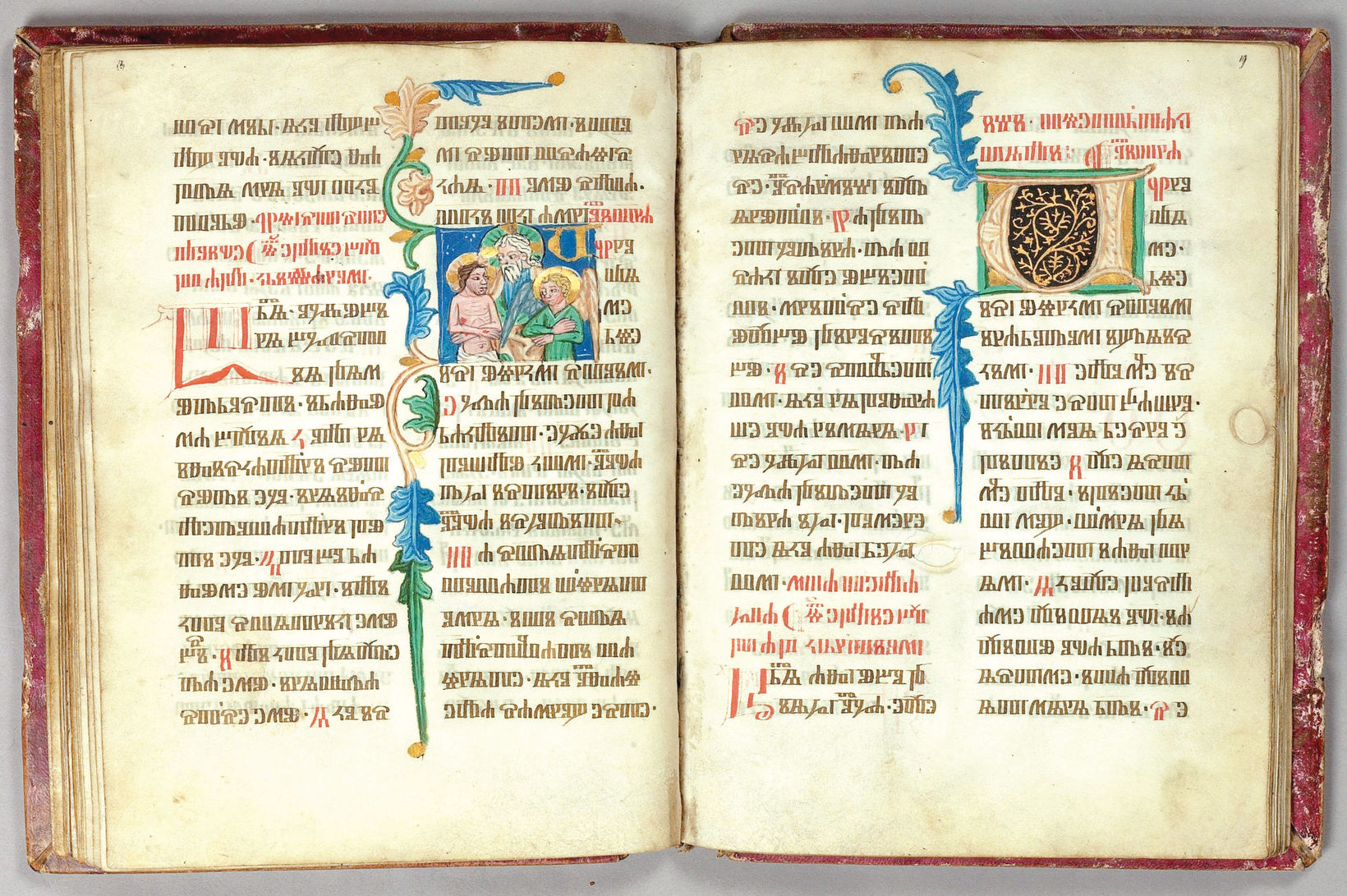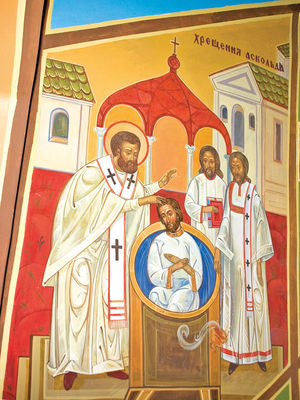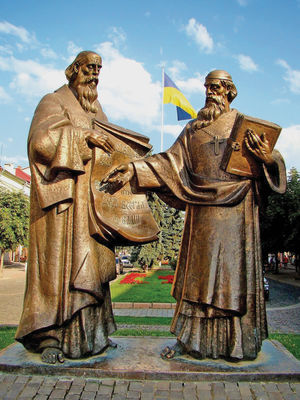2. Spread of the Christian Faith before Volodymyr 9th–10th centuries
The formation of the Kyivan state is closely intertwined with the spread of Christianity on Ukrainian territories. According to Photius, Patriarch of Constantinople, and the Byzantine chroniclers, in 860 Prince Askold of Kyiv and his entourage were baptized (received the “first baptism of Rus’”) during the campaign against Constantinople, and invited missionaries to Kyiv.
Thereafter, Christianity was spread amongst the Kyivans.
The missionary work of Cyril and Methodius also had a decisive influence on this process starting from the 9th century. The city of Thessalonica (Solun), where the brothers were born, was very close to Slavic lands. Cyril studied in Constantinople at the court of the Byzantine Emperor Michael III and knew Slavonic, Greek, Latin, Hebrew, and Arabic languages. For a while he worked as a librarian in the patriarchal library and traveled to the Khazars on a diplomatic mission. Methodius served in the army, but quickly gave up a military career and entered a monastery.
On the invitation of Prince Rostislav of Greater Moravia and with the consent of Emperor Michael III and Patriarch Ignatius, the brothers commenced their missionary work, preaching Christianity to the people of Greater Moravia. The success of the endeavor was facilitated by the fact that before leaving for Moravia, Cyril created a Slavic alphabet to help translate the Holy Scriptures and which, with the consent of the Holy See of Rome became the official script of the Eastern Slavs and other peoples. The brothers translated the Scripture, Psalms, Letters of the Apostles, and liturgical books from the Greek language and officiated the Liturgy in the Slavonic (old Bulgarian) language.
Through a language understood by the Slavs, the Christian faith began to spread rapidly not only in Greater Moravia, but also among the neighboring Slavic tribes, particularly in Poland and Western Rus’.
Moreover, the translational activity of Saints Cyril and Methodius contributed to the further development of Slavic culture in general. “Old Slavonic” for centuries became not only the Church language, but also the official literary language used by the educated strata of society.
 Rhemish Edition of the Gospel of Anna Yaroslavna, Written in Old Slavic
Rhemish Edition of the Gospel of Anna Yaroslavna, Written in Old Slavic
Not only that, but before the start of his mission, St. Cyril, having been in Chersonesos in 861 and having discovered the relics of St. Clement, together with his brother, brought them to Rome in 867, where they were solemnly accepted by the Bishop of Rome.
Saints Cyril and Methodius are recorded in history as the “bridges” that united the Slavic peoples with the Catholic Church. By that time, the differences between Rome and Constantinople were heating up and led to fierce polemical debates in church literature. However, the activities of the holy brothers had a conciliatory nature. They sought compromise and believed that disputes should be resolved through dialogue. Therefore, on November 30, 1880, Pope Leo XIII formally introduced the feast day of Saints Cyril and Methodius into the Western Church, emphasizing their universal significance. On December 31, 1980 Pope John Paul II declared the Sants Cyril and Methodius, together with Saint Benedict, the spiritual patrons of Europe, and on June 2, 1985 issued the first special encyclical Slavorum Apostoli, which emphasized their special importance in the history of European Christianity. The Church celebrates Saints Cyril and Methodius as “the Apostles of the Slavs”, “equal to the Apostles”, and “Slavic Apostles and Primates”.

